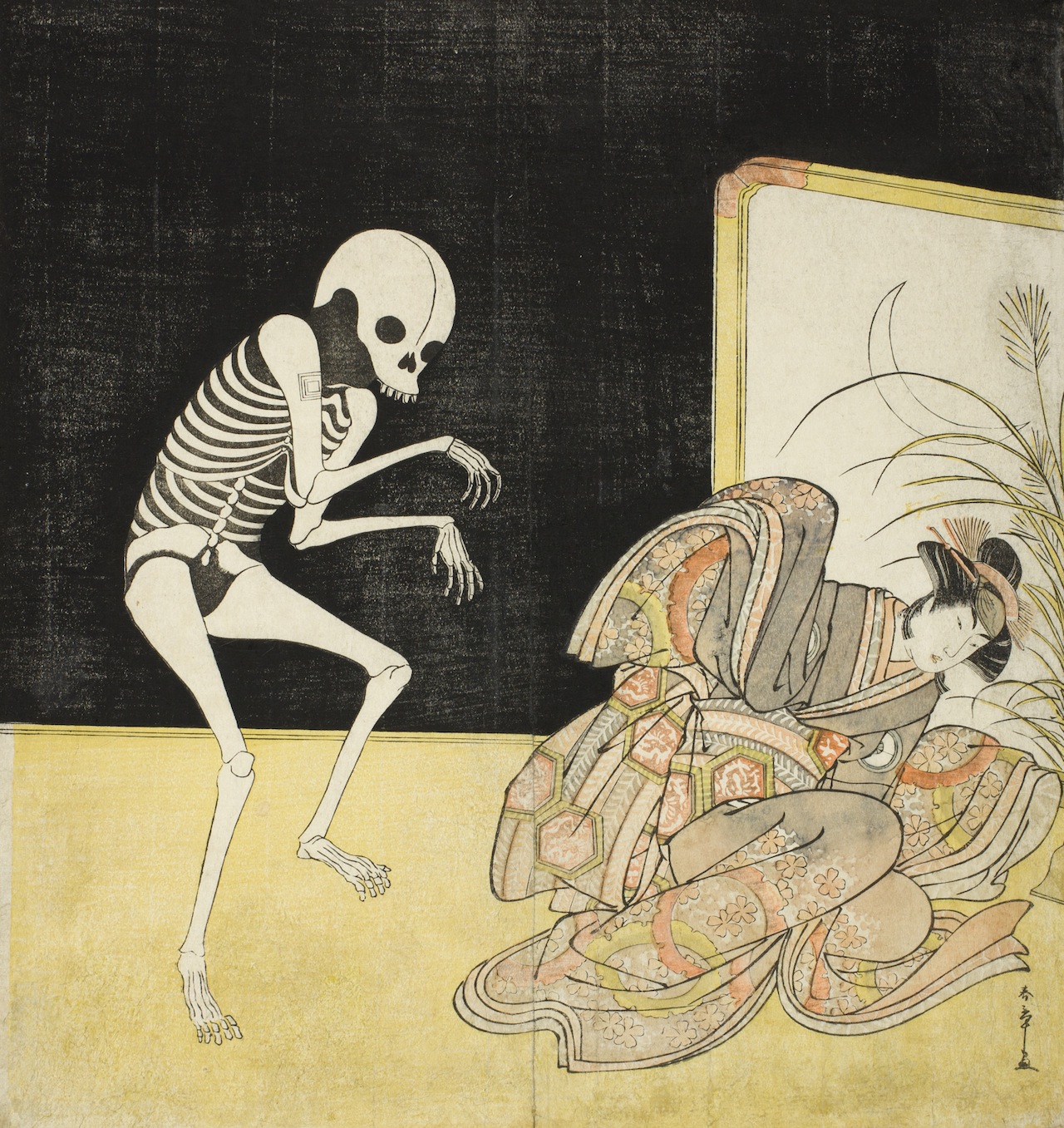When I saw this woodcut I immediately knew I must show it to you. So here it is, "The Actors Ichikawa Danjuro V as a Skeleton, Spirit of the Renegade Monk Seigen (left), and Iwai Hanshiro IV as Princess Sakura (right), in the Joruri ‘Sono Omokage Matsu ni Sakura (Vestiges of Pine and Cherry),’ from Part Two of the Play Edo no Hana Mimasu Soga (Flower of Edo: An Ichikawa Soga), Performed at the Nakamura Theater from the First Day of the Second Month, 1783".
Kabuki ghost plays were popular in the early 19th century. The productions included dramatic special effects, such as quick costume changes when an actor transformed into a ghost or the use of trap doors and a flying apparatus to terrify or excite the audience. The plays were most often performed in the heat of summer, the traditional time for telling ghost stories, as the tales were meant to give the audience a chill. The timing also coincided with the Japanese Festival of the Dead, or Obon matsuri. Katsukawa Shunsho’s 1783 print depicts the Buddhist monk Seigen who fell in love with Princess Sakura and later haunted her.
It's fantastic, isn't it?


 Katsukawa Shunsho
Katsukawa Shunsho